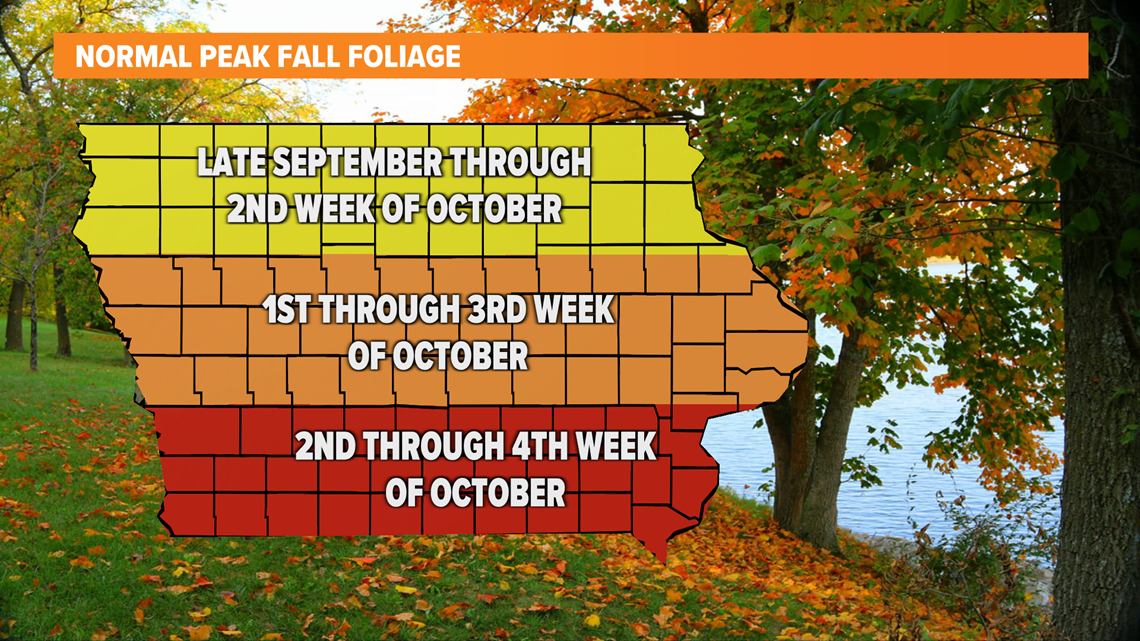DES MOINES, Iowa — Autumn is the onset of cooler weather and a beautiful change to Iowa's landscape.
But why do the leaves change color every fall?
All plants and leaves carry a number of chemicals including chlorophyll which gives them their green pigment in the spring and summer.
This chemical absorbs sunlight for energy that is used in transforming carbon dioxide and water to carbohydrates in a process called photosynthesis.
Once cool autumn weather arrives, chlorophyll breaks down and reveals the pigment from other chemicals like xanthophyll (yellow), carotene (orange) and anthocyanin (red).
For Iowa, these beautiful fall colors typically peak in late September through late October.


Every year is a little different though largely due to the weather.
Whether or not fall colors are full and vibrant depends on conditions during both the autumn and the summer.
Hot, dry summer weather stresses trees and can cause leaves to drop prematurely. It can also delay the onset of fall color.
On the other hand, adequate summer rain promotes healthy trees through the fall season.
In autumn, warm, sunny days and cool nights lead to vibrant foliage.
Rainy, windy days often knock leaves down prematurely and shorten the color display at its peak.
In summary: the most vibrant fall color will occur on years with ample moisture in the summer and dry, clear weather in the fall.

